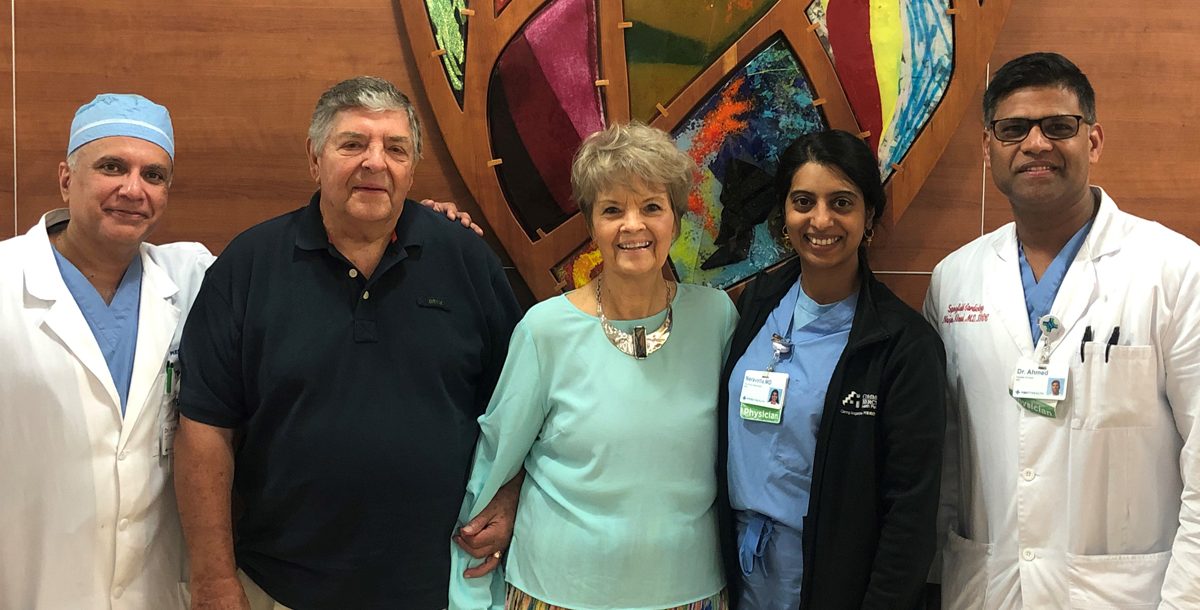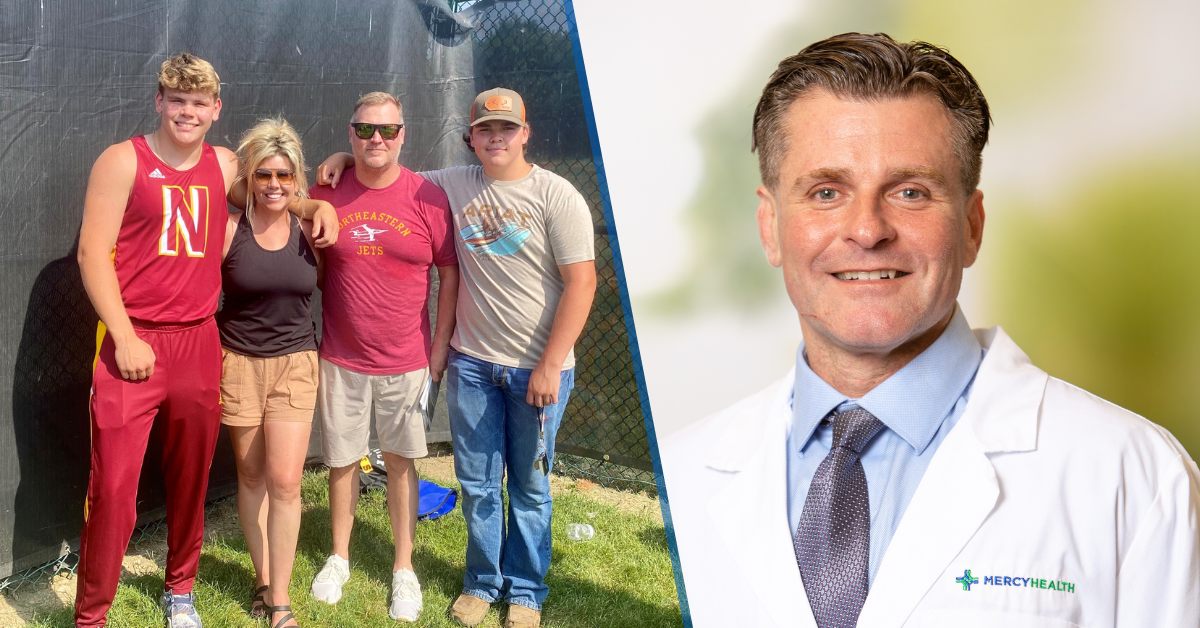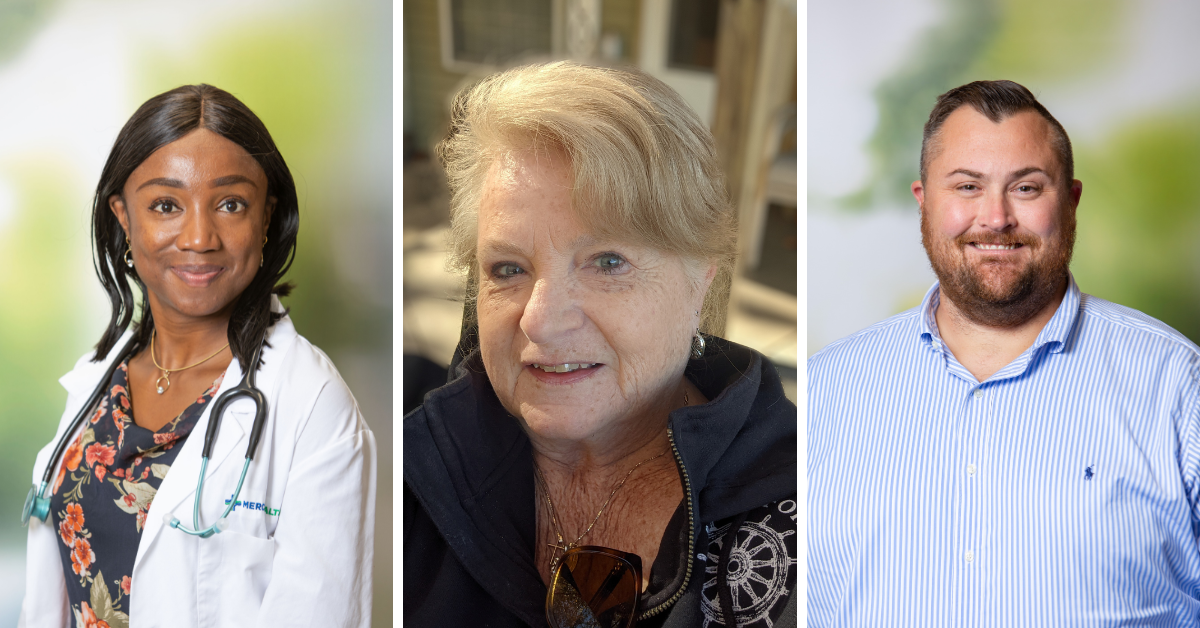Check out this TAVR procedure patient success story.
“I was limiting my lifestyle and jobs throughout the day,” says St. Paris, Ohio resident Sharon Hanlin. “I thought it was due to my bad back and its rods and screws, and never thought it was due to my heart.”
During her annual cardiology check-up in April 2019, Sharon was surprised to learn from her cardiologist, Najeeb Ahmed, M.D., that her aortic and mitral valves were in bad shape.
The heart has four valves, which control blood flow in and out of the heart. When people develop heart valve disease, the flow is disrupted. This can lead to fatigue, shortness of breath, dizziness and fainting, among other symptoms.
Sharon’s diagnosis started a five-month journey that ultimately lead to her being the first patient to have minimally invasive transaortic valve replacement (TAVR) surgery at Mercy Health – Springfield Regional Medical Center.
After exploring her options with different heart care providers, Mercy Health physician and cardiologist Faiq Akhter, M.D., and cardiothoracic surgeon Soumya Neravetla, M.D., performed Sharon’s TAVR procedure on August 21.
TAVR is a minimally invasive way to treat patients with aortic valve stenosis, or a narrowing of the heart valve. Best of all, it does not involve open heart surgery. Instead of making a large incision in the chest, the medical team inserts a catheter into one of the leg arteries. The artery then serves as a conduit to deliver the new valve.
The new valve is crimped very tightly on a balloon, advanced through the catheter to the diseased valve and put in place with balloon inflation. Upon deflation and removal of the balloon, the new valve is immediately functional. Most patients experience instant clinical benefit.
“I am more than pleased with the results. I would have been in great pain for days from having my sternum opened. Instead, I was only in the hospital for two nights,” says Sharon. “Since the surgery, I have more strength and do more than I was doing prior to surgery. I got great care and feel like Mercy Health was where I belonged.”
Patients suffering from any aortic valvular disease may be potential candidates for the TAVR procedure.
“We perform the procedure, which takes less than 60 minutes, in the cardiac cath lab,” says Dr. Akhter, director of cardiology at Mercy Health – Springfield Regional Medical Center. “It carries a very low risk of complications. Patients are generally ready for discharge within 48 hours and can expect a complete recovery within several days.”
Bringing this procedure to the Springfield, Ohio area is particularly meaningful to Dr. Neravetla. Along with Dr. Akhter, she has undergone intensive TAVR training including performing numerous previous procedures. They are also both part of a multidisciplinary TAVR team that includes cardiologist Sayed Muhammad Tariq Rizvi, M.D., cardiovascular surgeon Amit Arora, M.D., and the wider cardiology team involved in preparing patients for the procedure.
“I’m excited to apply my experience and special training to launch this program for the benefit of the people of my hometown,” says Dr. Neravetla. “Ensuring the availability of these advanced technologies for the people of Springfield has been my dream, allowing us to dramatically increase the number of people helped, saving lives, right here at home.”
Learn more about the TAVR procedure or find a provider near you at Mercy Health.






